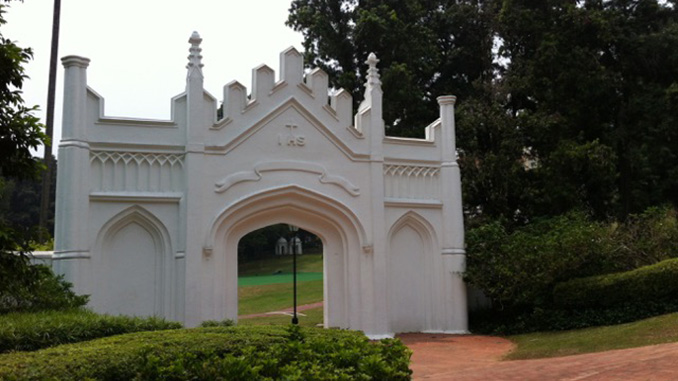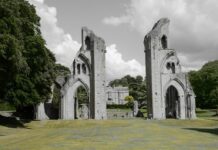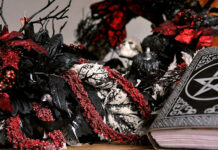
- 253shares
- Facebook249
- Twitter3
- Pinterest1
- Reddit0
- 0
- views
- Like
- Digg
- Del
- Tumblr
- VKontakte
- Buffer
- Love This
- Odnoklassniki
- Meneame
- Blogger
- Amazon
- Yahoo Mail
- Gmail
- AOL
- Newsvine
- HackerNews
- Evernote
- MySpace
- Mail.ru
- Viadeo
- Line
- Comments
- Yummly
- SMS
- Viber
- Telegram
- Subscribe
- Skype
- Facebook Messenger
- Kakao
- LiveJournal
- Yammer
- Edgar
- Fintel
- Mix
- Instapaper
- Copy Link
I knew Singapore was tropical, but I wasn’t prepared for the reality of the heat. The air felt alive against my skin, thick, intrusive, and dense. My daughter whined as soon as she stepped into a sunbeam. Sorrell and her father are sensitive to heat, so I felt sympathetic, but we had hardly been out of the air-conditioned subway station ten minutes. I poured precious water out of my bottle onto her t-shirt, hoping to cool her down as we trudged up a gradual slope made mountainous by the heat.
Fort Canning Park stands on a hill in Singapore City, a 100-acre oasis full of trees, a museum, and a concert venue. It was the site of the Malay palaces, when the country belonged to the Majapahit empire. It still contains a shrine for Sultan Iskandar Shah, last monarch of the old kingdom of Singapura. Archaeologists have even found Javanese artifacts dating to the 14th century on the hill. It’s been considered sacred a long time.
After Stamford Raffles negotiated the colonization of Singapore for the British Empire and the East Indian Company in 1819, he built his home on the top of the hill. Nearby, the British Army built barracks, a hospital, and an arms depot, which they called Fort Canning. Part of the British army fortifications have been preserved as the Battle Box, a historical monument commemorating the British surrender of Singapore to the Japanese in World War II.
During the 19th century colonial period, Singapore served as a British port of call. Between the dangerous life onboard and the decadent lures of the port, sailors are never the healthiest sort. By 1822, a fairly large group of Westerners had settled in Singapore to make their fortunes. Both groups required a graveyard. The Old Christian Cemetery was used between 1822 and 1865. The southern half served the Anglican community, while the northern half was used by all other Christian denominations and miscellaneous Westerners.
My friend Gary’s family had kindly offered to host us in Singapore while they were stationed there. He’d spoiled us by chauffeuring us all over Singapore City from Chinatown to Little India to the artificial sky trees of Gardens by the Bay. Gary knew I was fascinated by graveyards, so he went out of his way to escort us to this one – even though it wasn’t anything his family had done before.
Despite the heat, we found the old Christian cemetery. A high whitewashed gothic gate marked with IHS led into the green space where the cemetery once stood. The ornate gateway was the earliest example of Gothic Revival style in Singapore. It had been designed by Captain Charles Edward Faber, the superintending engineer in the Straits.
Sorrell’s continuing tantrum about the heat embarrassed everyone. I sent her and Gary’s daughter to go sit in the shade on the shallow brick steps that led up along the edge of the cemetery. Then I hurried to photograph everything that caught my eye.
By 1970, the Old Christian Cemetery had become so dilapidated and dangerous that its monuments were removed, although apparently the bodies were left in place. All of the legible tombstones had been incorporated into the brick wall that now surrounds the green. Inscriptions on many of them had been painted white to emphasize the lettering. Others had weathered to little more than the word Memory and the hint of a Masonic emblem.
More than 600 people were buried in the old cemetery. A third of them were Chinese Christians. Others came from around the world, as evidenced by epitaphs in German, Dutch, Thai, and other languages.
A plaque at the top of the cemetery remembered George Drumgold Coleman, Singapore’s pioneer colonial architect. He served as Raffles’s consultant for town planning in Singapore and, as Superintendent of Public Works, oversaw draining marshes and road construction, before designing houses and churches. He eventually took charge of the cemetery, saw that it was fenced, and designed its cupolas. After Coleman died in 1844, he had a grand monument in the Christian Cemetery. Unfortunately, it has not survived.
Most of the headstones I photographed remembered children left behind as their parents traveled through Singapore. Women’s monuments always labeled them as wives – sometimes as mothers – but the men were rarely connected to family members on their monuments. Coleman was an exception to that. One of his memorial stones had been laid by his wife.
In order to see Coleman’s plaque, I’d left the brick walkway to cross bare dirt beneath the low-hanging branches of a tree. In the brief moment of shade, a swarm of biting insects attacked me. I never saw them, but their bites raised immediate welts on my bare legs.
As I fled them, my daughter hustled across the grass. “I almost died!” she crowed. “There was a scorpion where you told me to sit.”
Sorrell led me back to the steps along the wall. A shiny black scorpion writhed on the bricks, under attack by ants. When I looked it up later, I discovered that Heterometrus spinifer, the Malaysian black scorpion, isn’t known to be deadly to humans, although their stings can be very painful. It didn’t matter. Sorrell was giddy with her near escape from death. Her mood had much improved.
We ducked into the art museum at the top of the cemetery green to use their restrooms. I washed my bug bites, but the cold water didn’t soothe the itching. When we came out, a bride was being photographed in front of Coleman’s cupolas. Several day laborers lay on the brick paths in the shade, grabbing a siesta on their lunch hour. I wanted to wake them and warn them about the scorpions, but didn’t know if we’d share a language in common.
Both Gary’s family and mine were hot and hungry and ready for some air-conditioning. I, trying desperately not to itch, wanted to find a pharmacy. Gary led us to a downtown mall, where we discovered balm for all our discomforts.
It’s still my daughter’s favorite cemetery experience so far.










